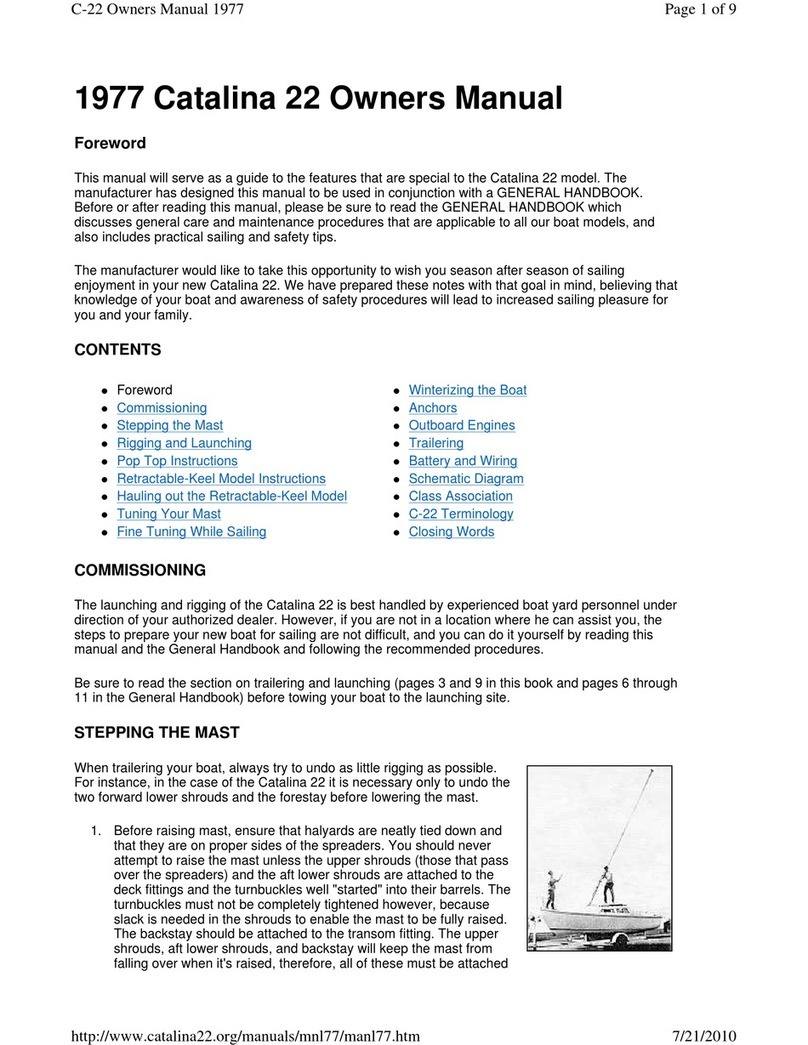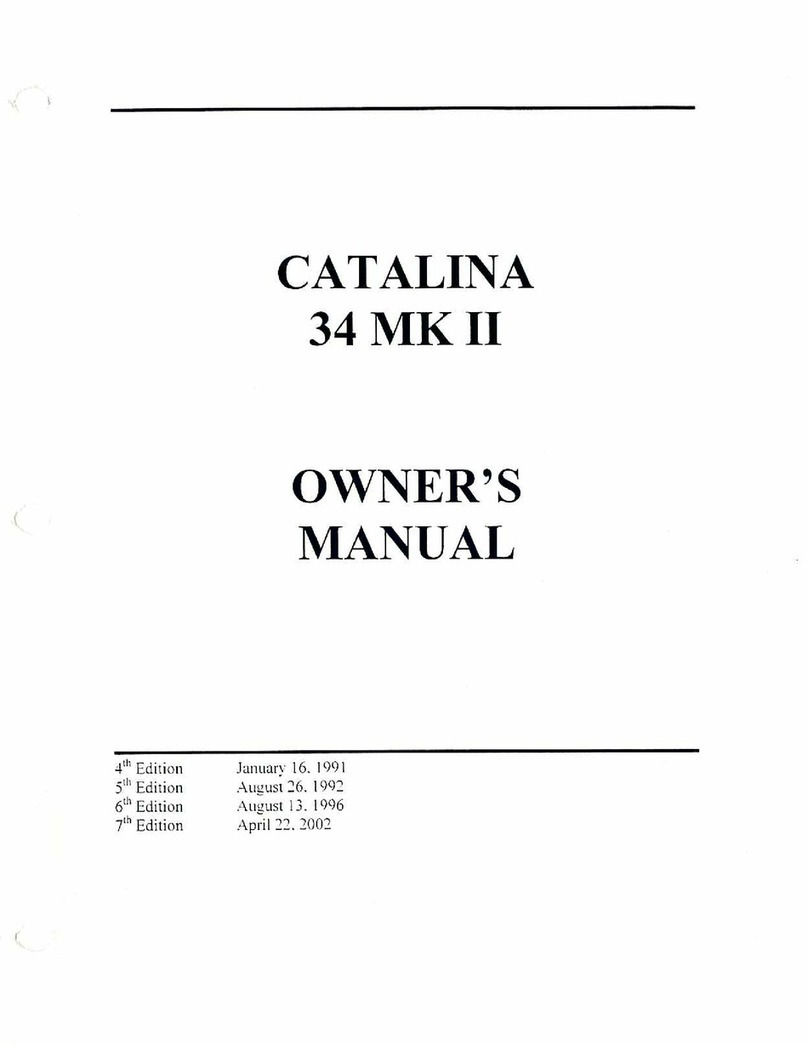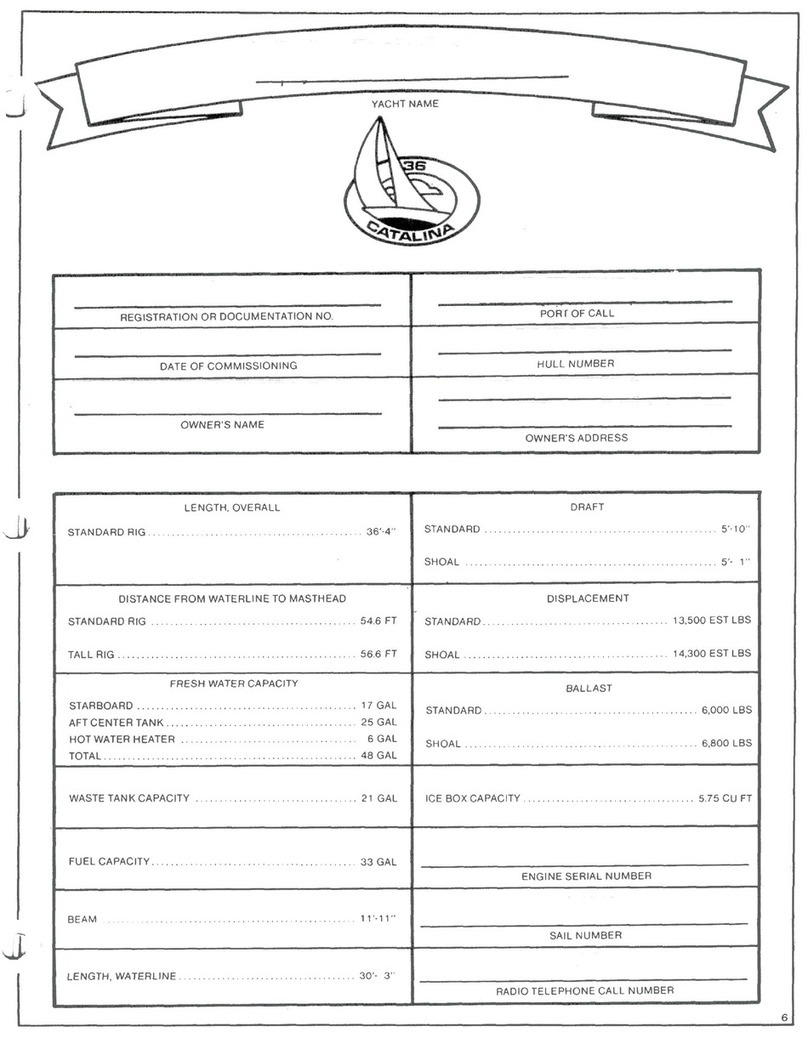
Catalina 250 Owner’s Manual
Page 1
TABLE OF CONTENTS
PREFACE.....................................................................................................................................................................................3
FORWARD...................................................................................................................................................................................4
YACHT INFORMATION AND SPECIFICATIONS ..............................................................................................................9
ADDITIONAL
SPECIFICATIONS........................................................................................................................................10
DIMENSIONS.....................................................................................................................................................................10
COMPARATIVE DATA (w/ Water ballast) ........................................................................................................................10
SAILS..................................................................................................................................................................................10
TANKAGE AND CAPACITIES...........................................................................................................................................10
RIGGING ...................................................................................................................................................................................11
OPTIONAL
MAST
RAISING
SYSTEM................................................................................................................................11
STEPPING THE MAST ......................................................................................................................................................11
LOWERING THE MAST.....................................................................................................................................................13
RIGGING
LENGTH ...............................................................................................................................................................14
SPREADER
ASSEMBLY ......................................................................................................................................................15
MASTHEAD
ASSEMBLY.....................................................................................................................................................16
MAINSTAY
AND
BOOM
VANG
SYSTEM......................................................................................................................... 17
TUNING
THE
MAST.............................................................................................................................................................18
AT THE DOCK (First part of tuning).................................................................................................................................18
TUNING UNDER LOAD (Second part of tuning)..............................................................................................................20
MAIN
SAIL
REEFING........................................................................................................................................................... 21
SAIL
PLAN............................................................................................................................................................................. 22
OTHER SYSTEMS....................................................................................................................................................................23
CENTERBOARD
SYSTEM...................................................................................................................................................23
WATER
BALLAST
SYSTEM................................................................................................................................................24
MANUAL
BILGE
PUMP .......................................................................................................................................................24
USEFUL
TIPS.........................................................................................................................................................................24
ELECTRICAL.........................................................................................................................................................................26
BATTERIES........................................................................................................................................................................26
ELECTROLYTE LEVEL.....................................................................................................................................................26
CHARGING THE BATTERY:.............................................................................................................................................26
DISCHARGED STATE:......................................................................................................................................................27
CLEAN CONNECTIONS: ..................................................................................................................................................27
ELECTRICAL
SYSTEM........................................................................................................................................................27
DC - 12 VOLT SYSTEM ..................................................................................................................................................... 27
WIRING DIAGRAM ...........................................................................................................................................................28
NAVIGATION LIGHTS ......................................................................................................................................................29
PREVENTIVE MAINTENANCE.........................................................................................................................................29
ACCOMODATION
PLAN.....................................................................................................................................................30
DECK
PLAN........................................................................................................................................................................... 31
RECOMMENDED
OUTBOARD
ENGINE ...........................................................................................................................32
POP
TOP
OPERATION..........................................................................................................................................................32
RECOMMENDATIONS
FOR
TRAILERING .......................................................................................................................32
GENERAL
SAFETY
TIPS .....................................................................................................................................................33






































